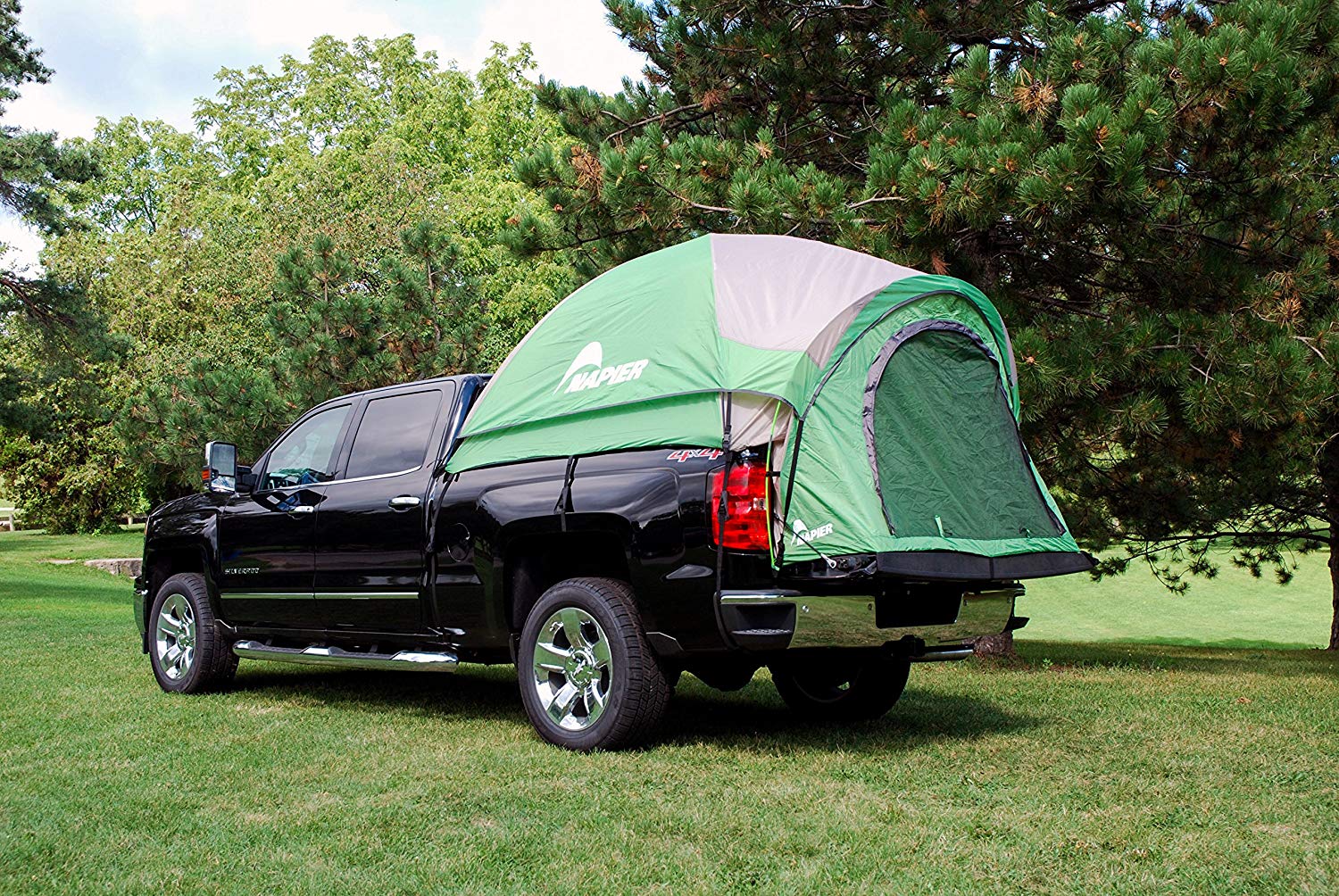
I. Introduction to DIY Truck Bed Tents
A. Exploring the Benefits and Convenience of Truck Bed Tents
Truck bed tents offer a convenient and comfortable camping solution for outdoor enthusiasts. They provide an elevated sleeping area, protected from the ground and potential moisture. Truck bed tents are easy to set up, portable, and offer the added convenience of utilizing the bed of a truck as a foundation.
B. Advantages of Building Your Own Truck Bed Tent
Building your own truck bed tent allows for customization and cost savings. It gives you the freedom to design and construct a tent that suits your specific needs and preferences. Additionally, building your own tent can be a rewarding and enjoyable project.
II. Planning and Designing Your Truck Bed Tent
A. Assessing Truck Compatibility and Bed Size
- Determining if Your Truck Can Accommodate a Bed Tent
Check if your truck is compatible with a truck bed tent by assessing its size, height, and features. Ensure that the truck bed has suitable dimensions and structure to accommodate a tent.
- Measuring the Truck Bed for Proper Sizing
Measure the dimensions of your truck bed to determine the appropriate size for your truck bed tent. Consider the length, width, and height of the truck bed to ensure a proper fit.
B. Researching Different DIY Truck Bed Tent Designs
- Exploring Existing Designs and Blueprints Online
Research existing DIY truck bed tent designs and blueprints online to gather inspiration and ideas. Study different designs to understand the construction process and identify features and modifications that may suit your needs.
- Considering Adaptations and Modifications for Customization
Consider adapting or modifying existing designs to better suit your truck and camping preferences. This may involve adjusting the size, layout, or features to create a personalized truck bed tent.
III. Materials and Tools Needed
A. Gathering Necessary Materials for Construction
- Selecting Durable and Weather-Resistant Fabrics
Choose durable and weather-resistant fabrics, such as nylon or polyester, for the tent canopy. Look for materials that provide adequate protection from the elements and are suitable for your camping environment.
- Choosing Sturdy Poles, Connectors, and Fasteners
Select sturdy poles, connectors, and fasteners to construct the tent frame. Aluminum or fiberglass poles are commonly used for their strength and lightweight properties. Choose connectors and fasteners that are strong and reliable for secure assembly.
B. Acquiring Essential Tools for the DIY Project
- Ensuring You Have the Required Tools for Construction
Check that you have the necessary tools for building the truck bed tent. Common tools include a drill, saw, screwdriver, measuring tape, and other basic hand tools. Having the right tools on hand will help facilitate the construction process.
- Investing in Safety Gear for Personal Protection
Wear appropriate safety gear, such as goggles, gloves, and a dust mask, when working with tools or during construction. This protects you from potential hazards and ensures your safety throughout the project.
IV. Construction and Assembly Process
A. Building the Tent Frame and Base for the Truck Bed
- Creating a Sturdy and Stable Frame Structure
Construct the tent frame using the selected poles and connectors. Follow the design or blueprint, ensuring the frame is sturdy and stable. Test the stability of the frame before proceeding with the assembly.
- Attaching the Base to the Truck Bed for Support
Securely attach the base of the tent to the truck bed for support. This may involve drilling or attaching brackets, clamps, or straps to ensure the tent is securely connected to the truck bed.
B. Installing Tent Materials and Attachments
- Adding a Waterproof Tarp or Tent Material for the Canopy
Install a waterproof tarp or tent material as the canopy of the truck bed tent. Ensure that it provides sufficient coverage and protection from the elements. Attach the canopy to the frame using appropriate fasteners or straps.
- Securing the Tent to the Frame with Fasteners or Straps
Securely attach the tent material to the frame using fasteners or straps. Ensure that the tent is taut and properly tensioned to prevent sagging. Double-check all connections and make any necessary adjustments for a secure fit.
V. Tent Maintenance and Care
A. Proper Cleaning and Storage
- Cleaning the Tent After Use
Clean the tent after each use to remove dirt, debris, and stains. Use mild soap or tent-specific cleaning products, following the manufacturer’s instructions. Thoroughly dry the tent before storage to prevent mold and mildew growth.
- Drying and Storing the Tent to Prevent Mold and Mildew
Ensure the tent is completely dry before packing and storing it to prevent mold and mildew growth. Hang the tent or lay it out in a well-ventilated area. Store the tent in a dry and cool place, away from direct sunlight, to prolong its lifespan.
In conclusion, building your own truck bed tent allows for customization, cost savings, and a rewarding DIY project. By planning and designing the tent, selecting the appropriate materials and tools, constructing the tent frame and base, attaching the tent materials, and properly maintaining the tent, you can create a personalized and functional camping shelter for your truck. Enjoy the freedom and convenience of a DIY truck bed tent on your outdoor adventures.
